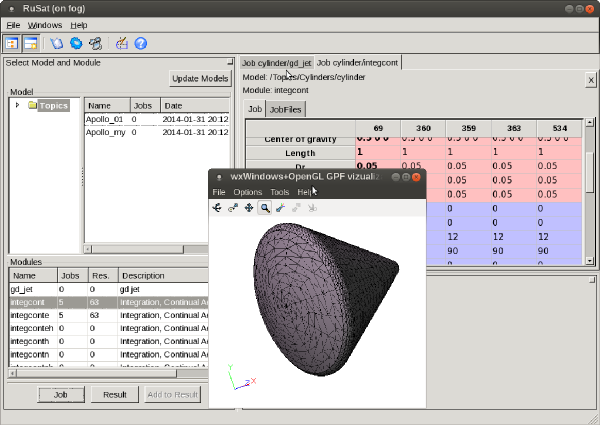RuSat engineering system
RuSat (Rapid Unified Satellite Aerodynamic Tool) is a software system is for computation of spacecraft aerodynamic characteristics in free-molecular (altitudes higher than 200 km) and transitional (altitudes 50-200 km) regimes. Its architecture is designed to provide integrated automation of computational process. The results of numerical simulation are used:
- in spacecraft design process
- during spacecraft operation
- for analysis of environmental effects after unsuccessful launch or abnormal reentry
Developed at ITAM SB RAS, RuSat has incorporated well-tried and proven solutions from long experience of creation and supporting of such systems. RuSat software system is currently used by number of spacecraft engineering organizations.

Main features of RuSat system are:
- client-server architecture
- results of computations are stored in database
- parametric modifications of spacecraft model
- options for computation of aerodynamic characteristics as functions of geometric parameters
- remote task start
- multiple computational methods and built-in options for their fast comparison
- built-in tools for visualization of spacecraft models and simulation results
Free-molecular solver takes into account:
- finite Mach number value
- gas-surface interaction using either specular-diffuse reflection or Nocilla model
- spacecraft elements intershading
- recurring molecule reflection from spacecraft elements
- Transitional regime solver employs:
Engineering interpolation between free-molecular and hypersonic (Ma > 5) continuum regimes
Newton-Busemann flow theory for continuum regime
spacecraft elements intershading
RuSat software system allows to simulate flow past bodies with quite complex shape, consisting of hundreds primitive geometric elements: cones, cylinders, spheres, plates and so on.